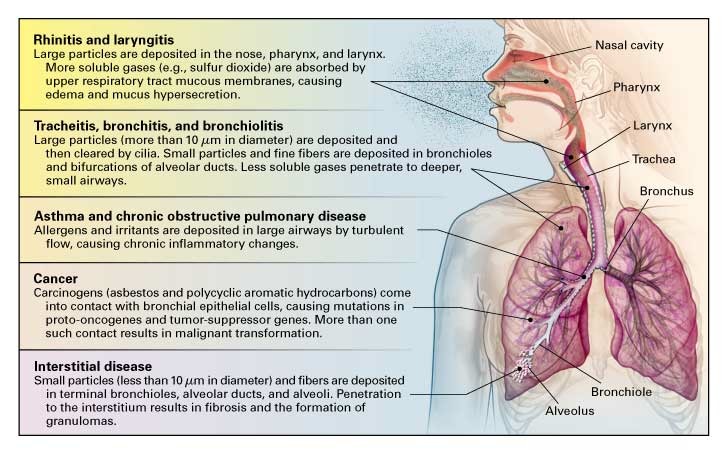
Chronic respiratory diseases (CRDs) are diseases of the airways and other structures of the lung. Some of the most common are chronic obstructive pulmonary disease (COPD), asthma, occupational lung diseases and pulmonary hypertension. In addition to tobacco smoke, other risk factors include air pollution, occupational chemicals and dusts, and frequent lower respiratory infections during childhood. CRDs are not curable, however, various forms of treatment that help dilate major air passages and improve shortness of breath can help control symptoms and increase the quality of life for people with the disease. The WHO Global Alliance against CRDs (GARD) vision is a world in which all people breathe freely, GARD focuses in particular on the needs of people with CRDs in low-income and middle-income countries.
The aim of the WHO Chronic Respiratory Diseases Programme is to support Member States in their efforts to reduce the toll of morbidity, disability and premature mortality related to chronic respiratory diseases, and specifically, asthma and chronic obstructive pulmonary disease.
Symptoms
Chronic respiratory diseases are chronic diseases of the airways and other structures of the lung. Two of the most common are asthma and chronic obstructive pulmonary disease (COPD).
Asthma is a chronic, noncommunicable disease characterized by recurrent attacks of breathlessness and wheezing, which vary in severity and frequency from person to person. Symptoms may occur several times in a day or week in affected individuals, and for some people become worse during physical activity or at night. Asthma is the most common chronic disease among children.
COPD is not one single disease but an umbrella term used to describe chronic lung diseases that cause limitations in lung airflow. The most common symptoms of COPD are breathlessness, or a ‘need for air’, excessive sputum production and a chronic cough.
Risk factors for chronic respiratory diseases include tobacco smoking (including second-hand smoke), air pollution, allergens and occupational risks. Outdoor air pollution and indoor air pollution (often caused by cooking with solid fuels) are also common causes.
Treatments
Treatments for each chronic respiratory disease vary and the ideal solution is the reduction and avoidance of risk factors. Neither asthma nor chronic obstructive pulmonary disease (COPD) can be cured but treatments can reduce symptoms, prevent escalation and improve quality of life.
Appropriate management of asthma through medications like inhaled corticosteroids can control the progression of the disease and reduce deaths. Daily, long-term medication is required for people with persistent symptoms and triggering settings should be avoided.
Chronic obstructive pulmonary disease is confirmed by a spirometry test, which measures how much and how quickly a person can forcibly exhale air. Symptoms can be treated through medical and physical treatments; however, with COPD in people who smoke tobacco, the most effective treatment available is the cessation of smoking. This can slow down the progression of the disease and decrease COPD-related deaths. Some people also find positive effects using inhaled corticosteroid medicines.
